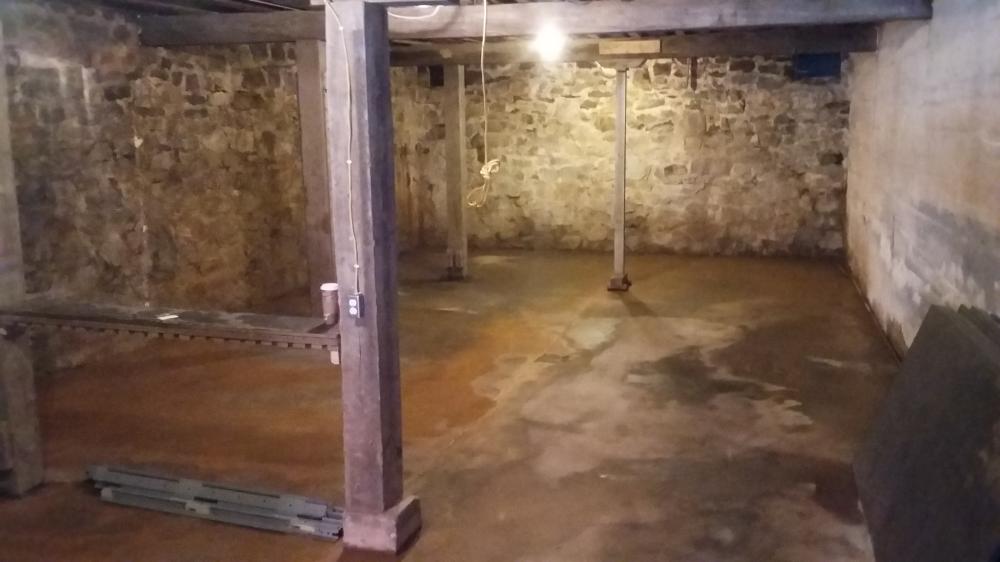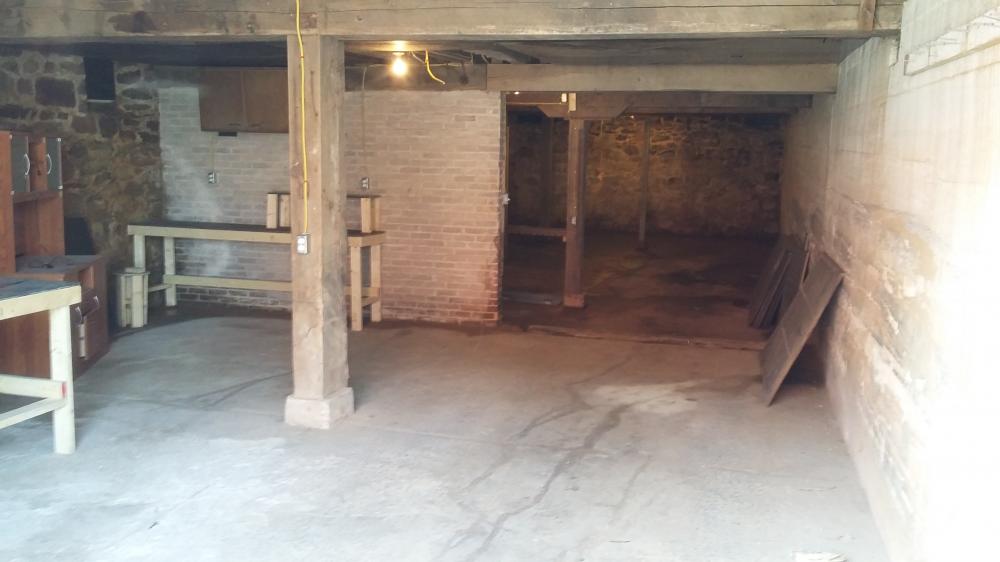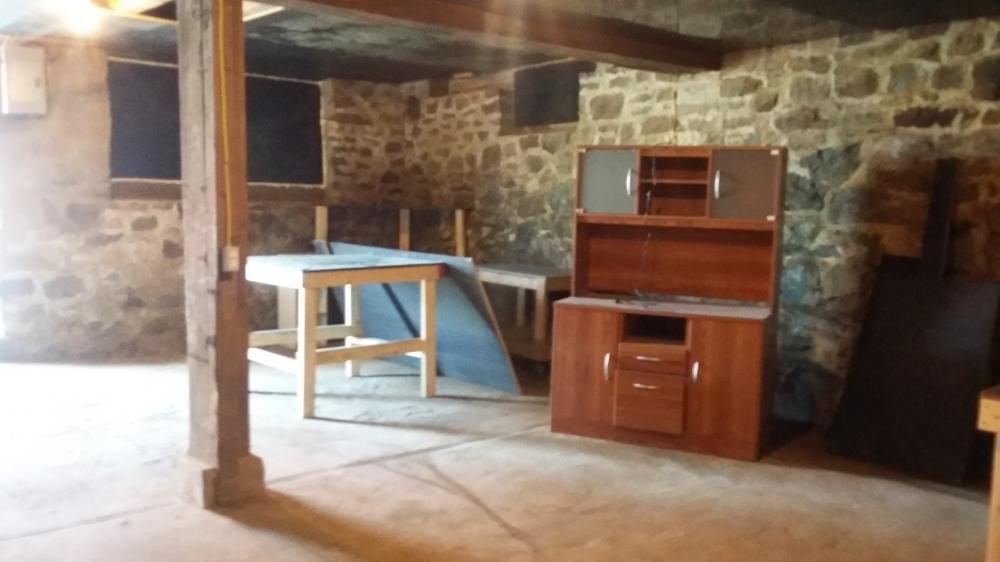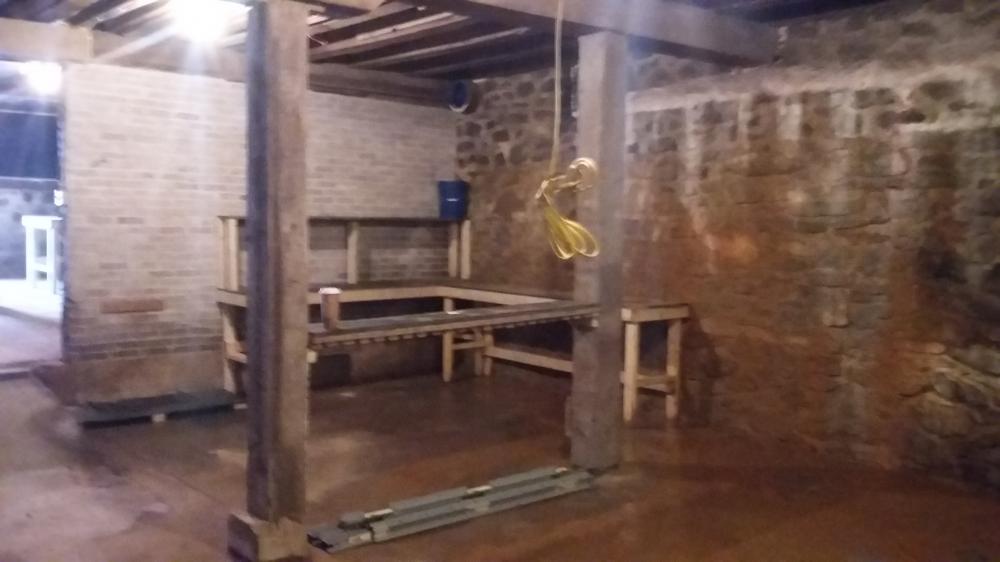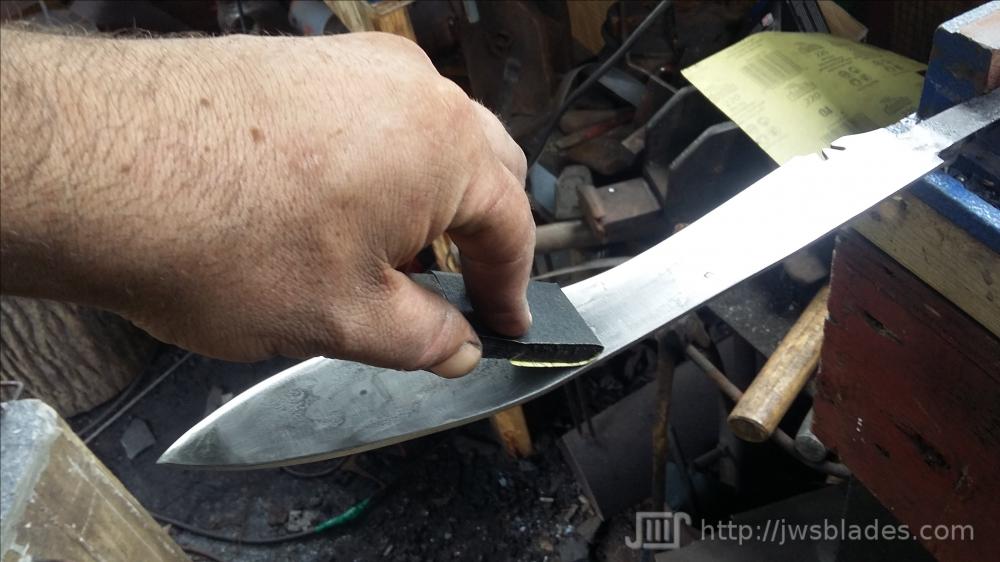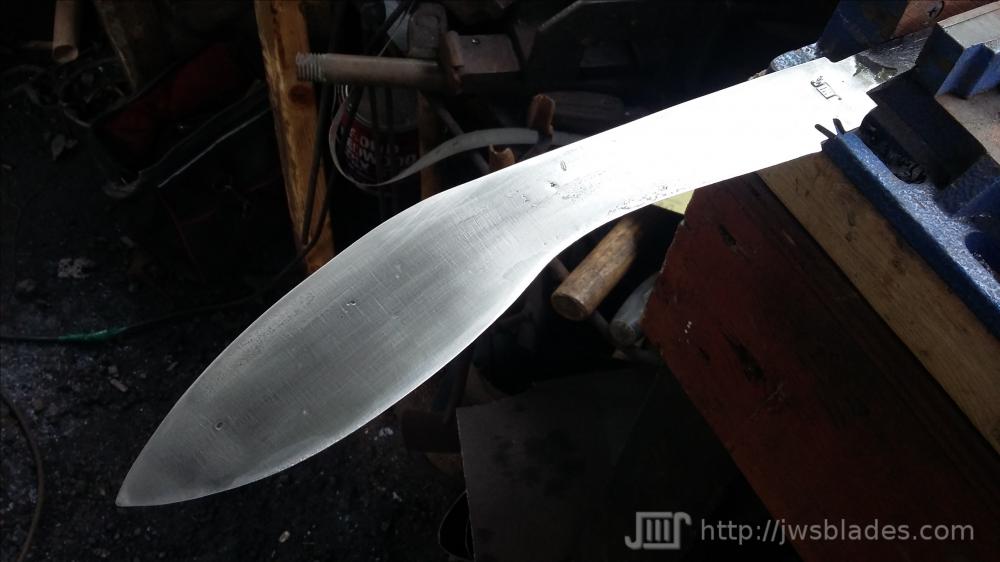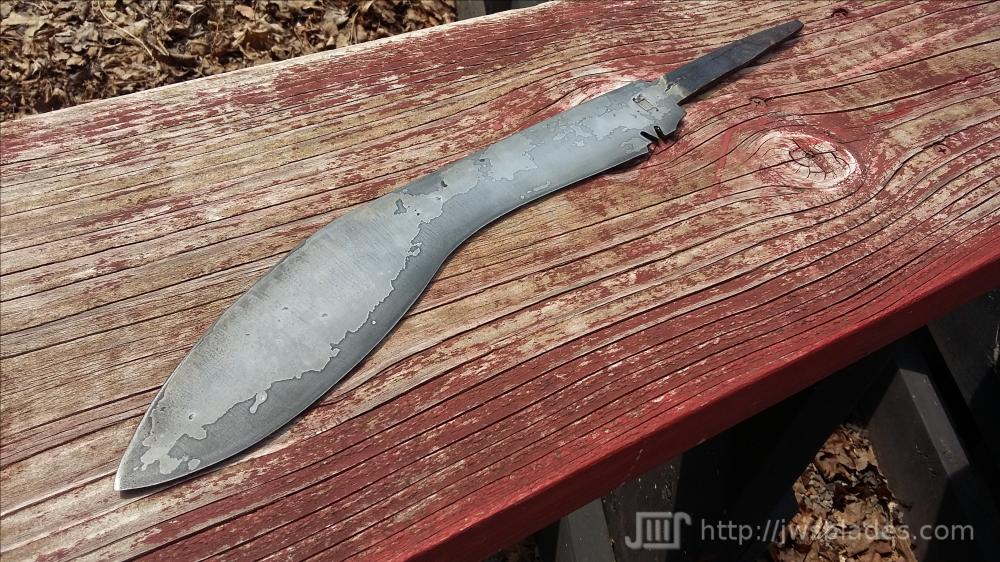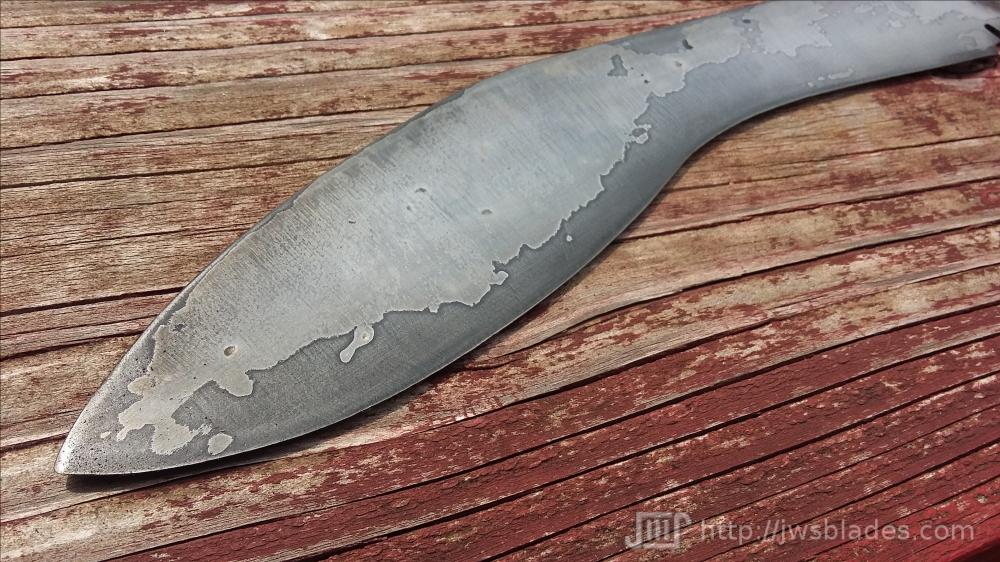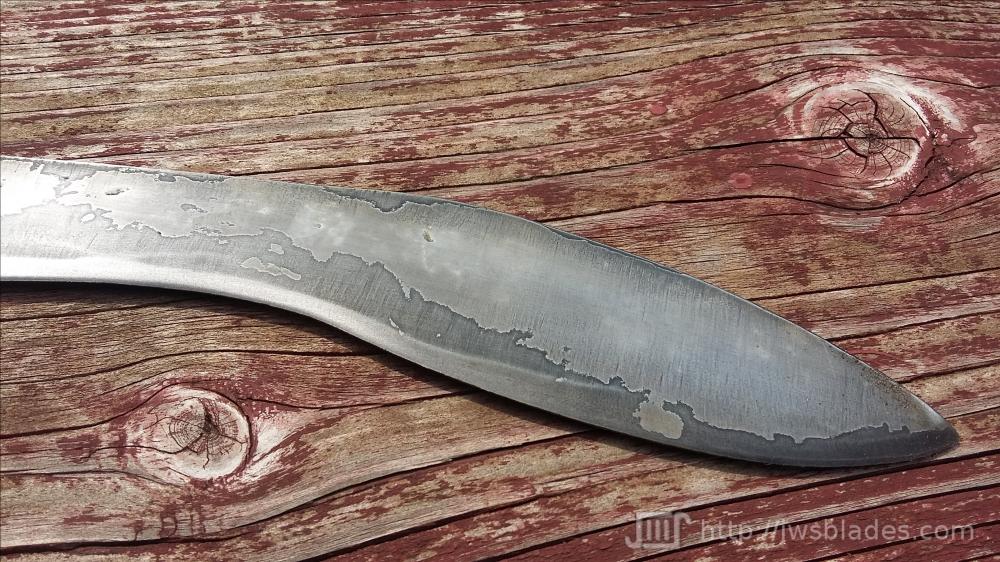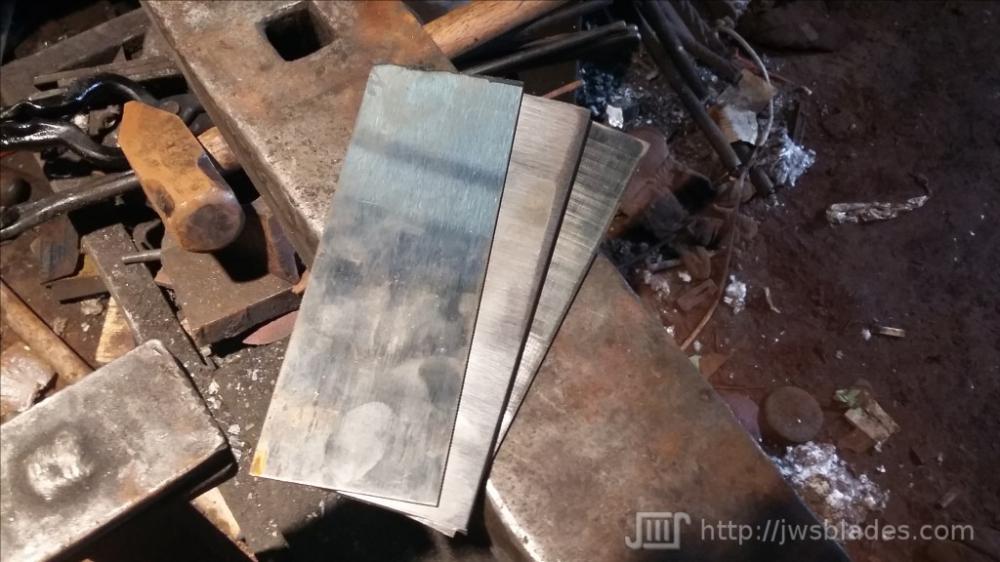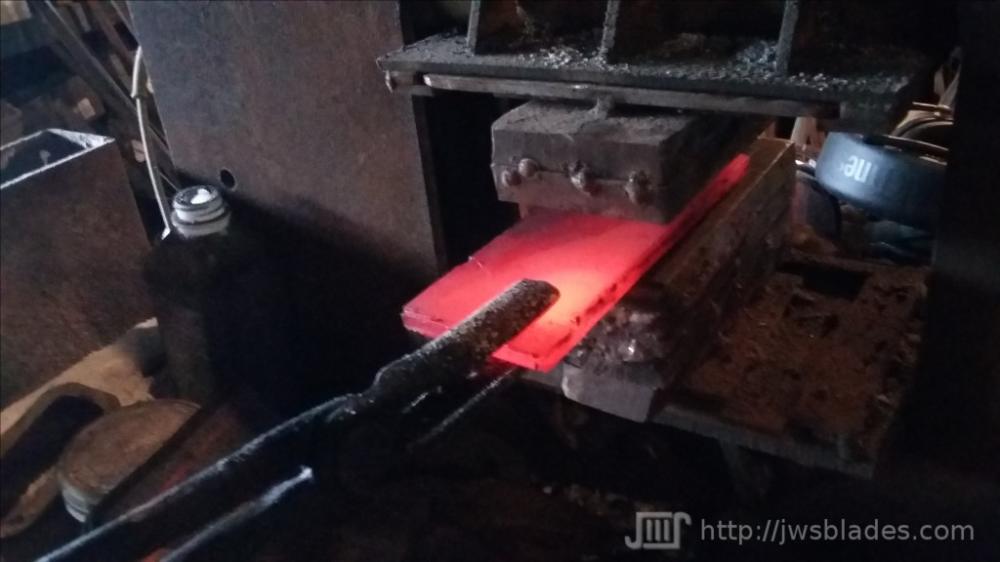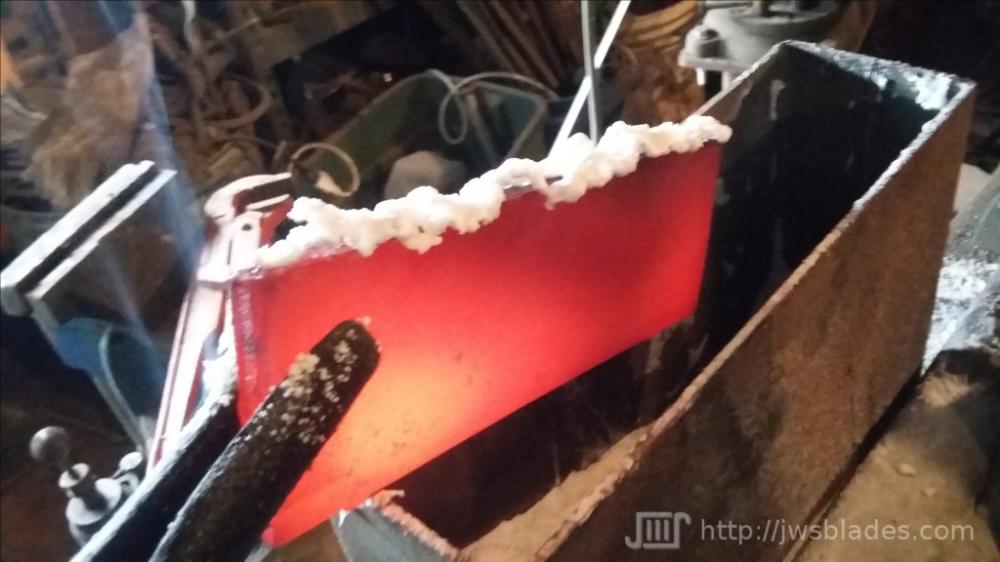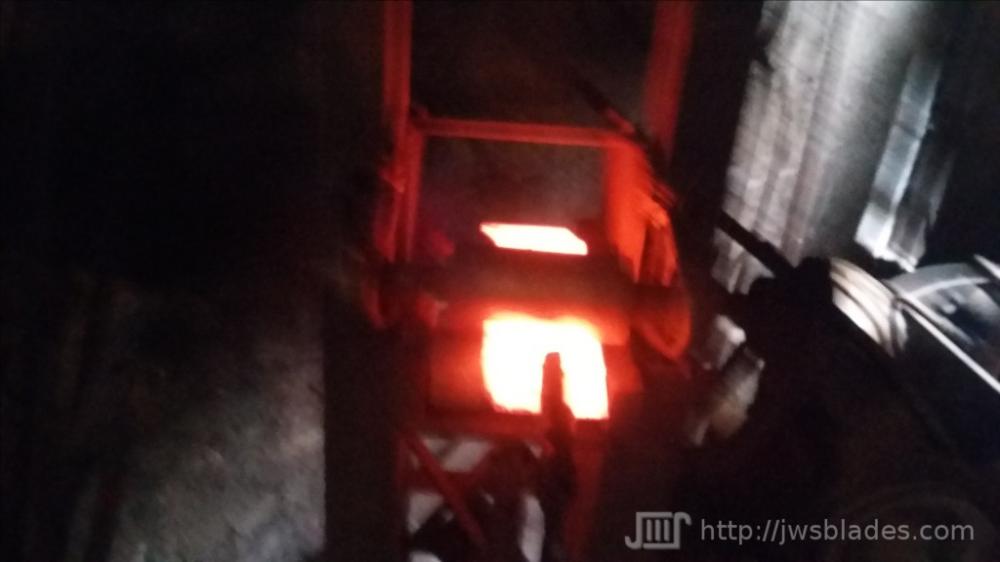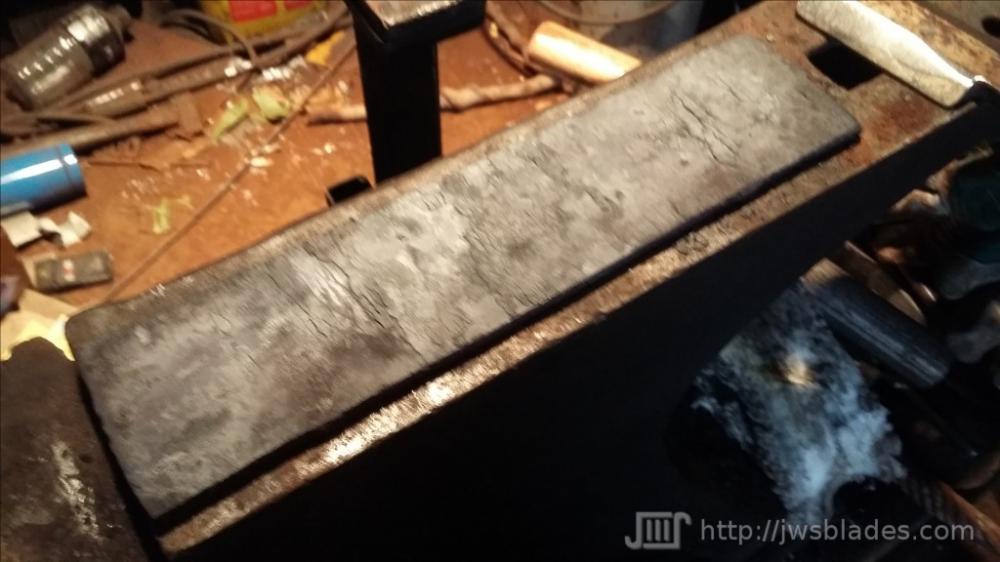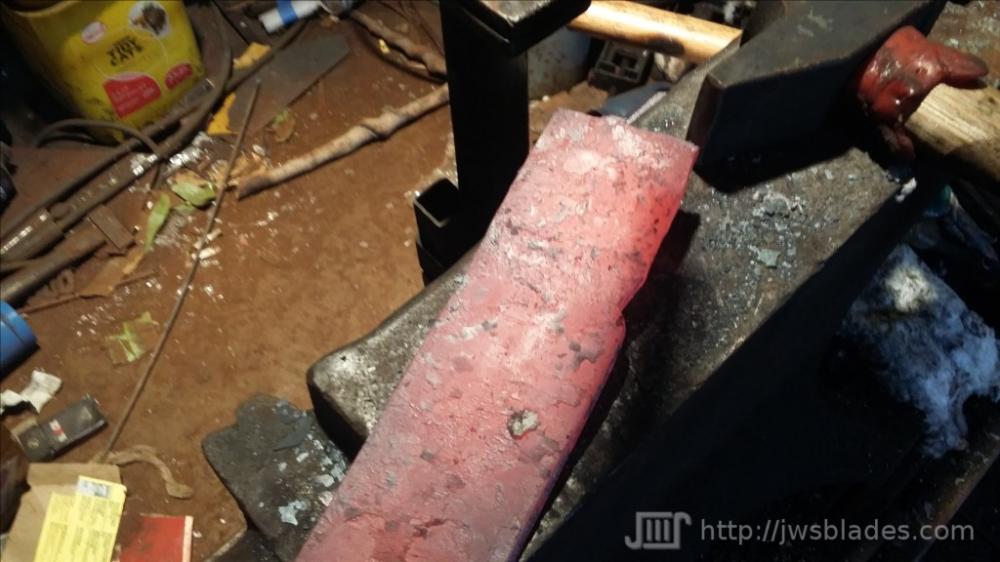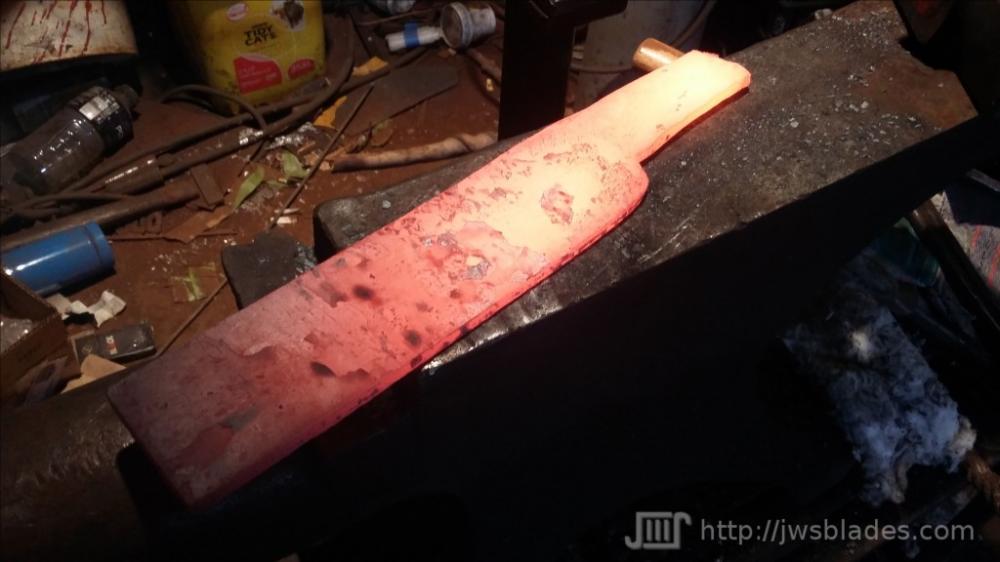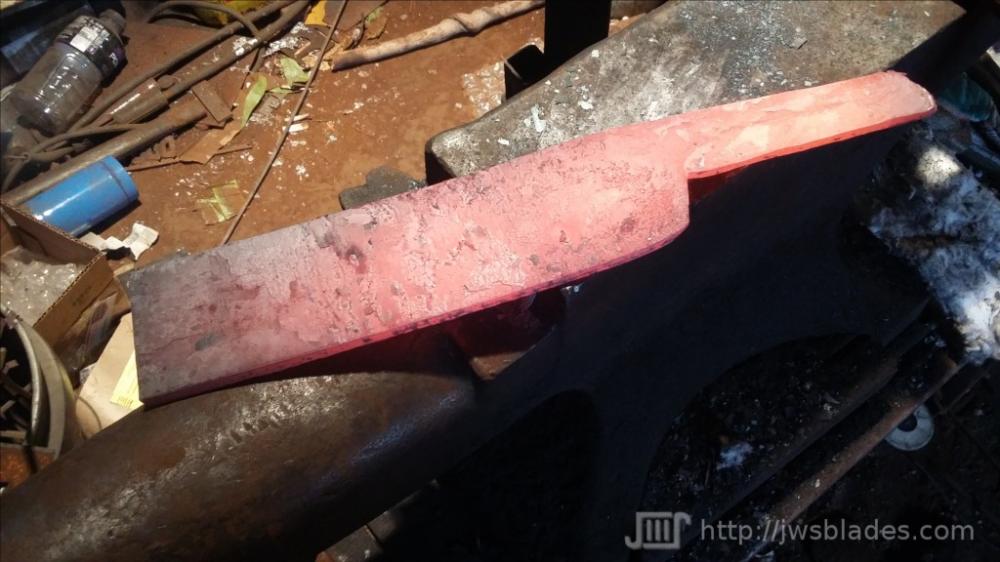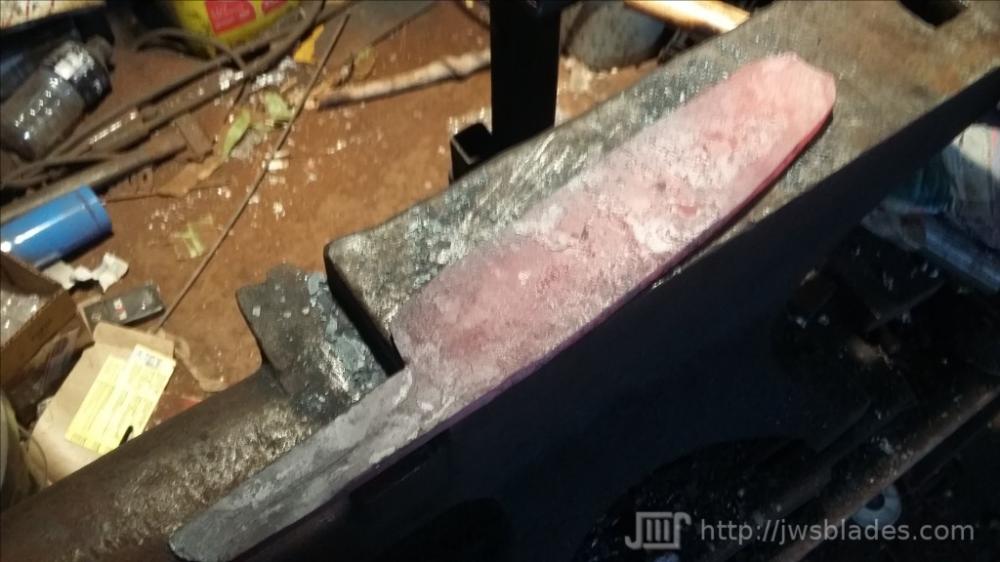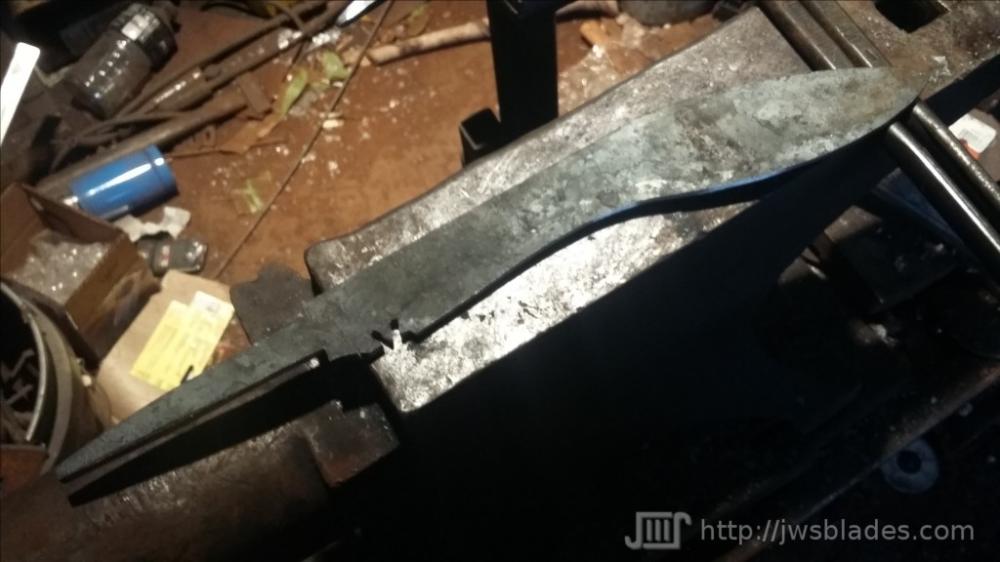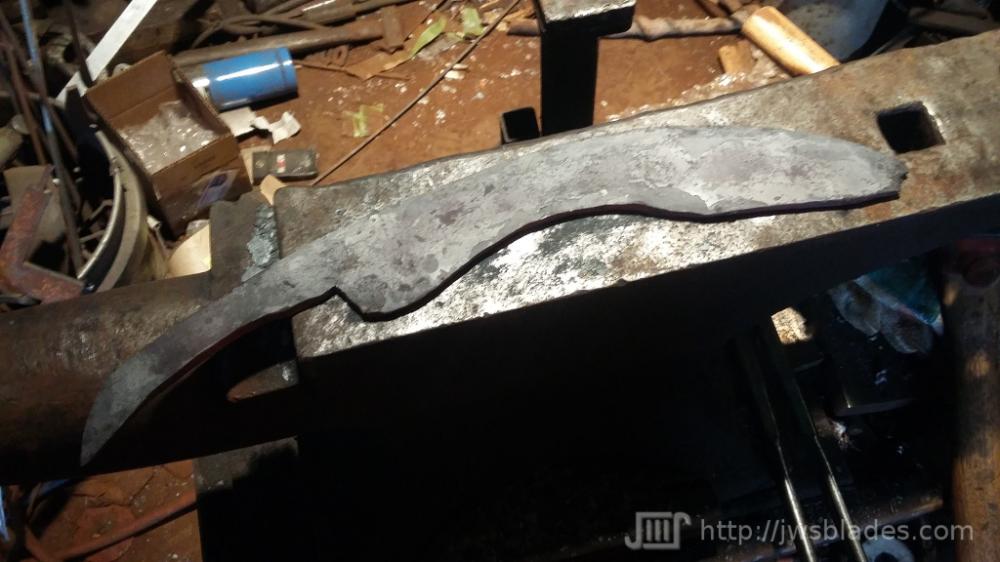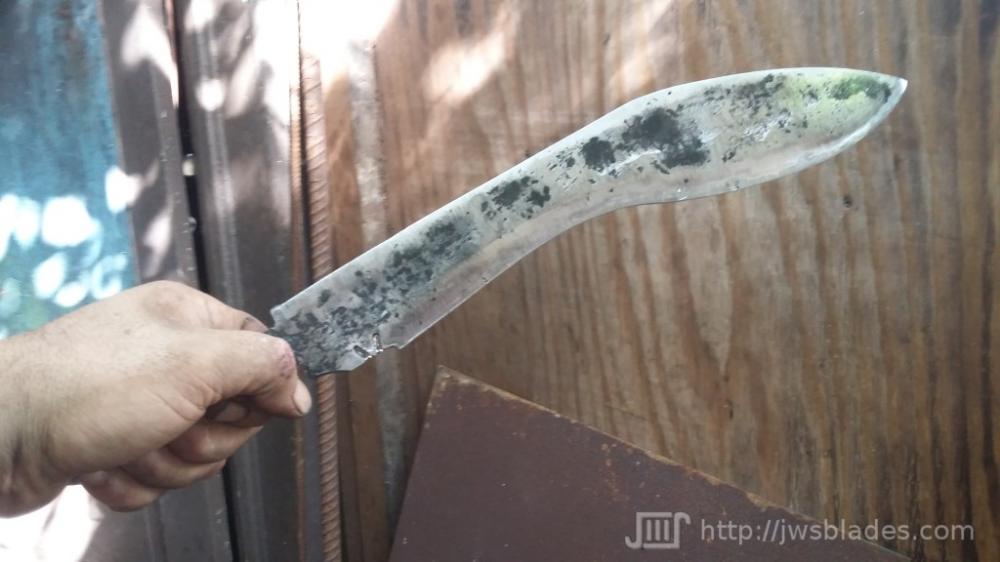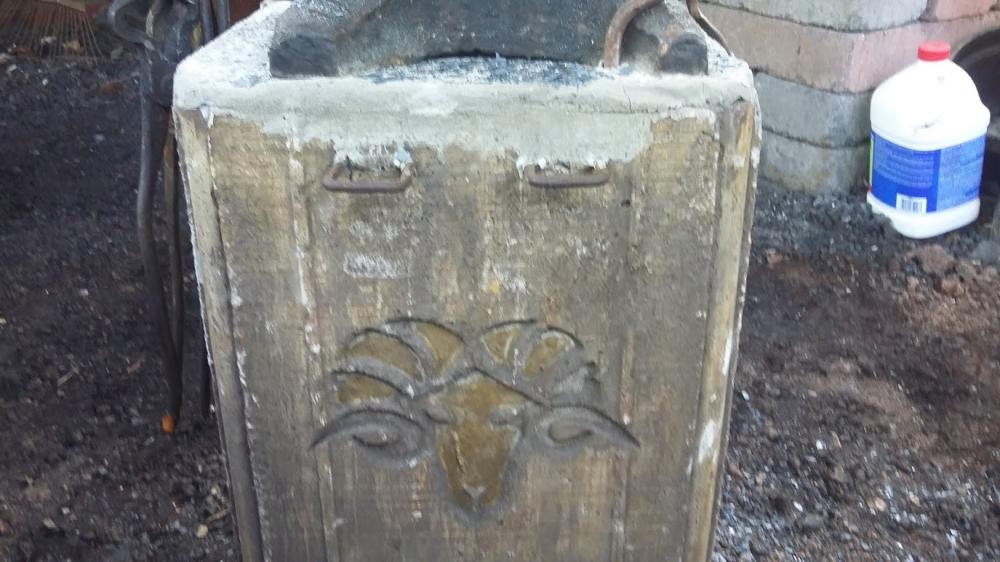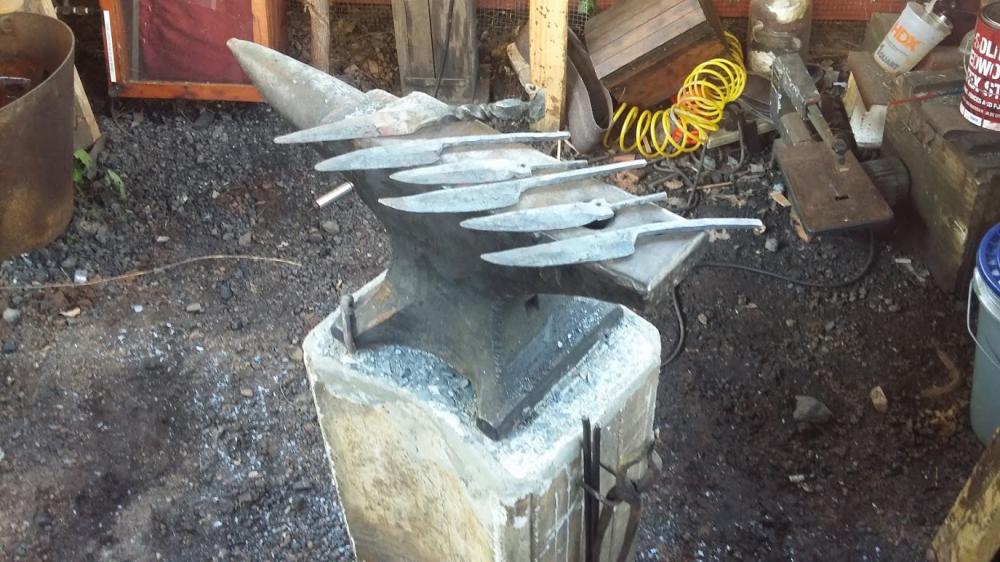-
Posts
642 -
Joined
-
Last visited
Content Type
Profiles
Forums
Articles
Gallery
Downloads
Events
Everything posted by j.w.s.
-
So I took a plunge today, looked at and leased a new shop. For the past few years I've been sharing an 18x26 shop and needless to say it's a little cramped. To make a long story short, the Amish family my wife leases her horse farm from has another farm down the road with a bunch of storage and workshops. Found out there was one available and jumped on it. Shop size is 21x70 and it's essentially the basement of an old barn, cool in the summer comfortable in the winter. Stone walls, exposed beams, 10ft ceilings, water, pass throughs for a chimney or two, i can work 24/7 (no restricted hours), I can drive my truck through the door, 100 amp electric is included in the lease and the price is less than most people pay in car payments each month. I think I just lucked out! Now its down to the fun part, over the next 3 months I get to slowly move from one shop to another and build new forges and equipment from the ground up - all while my biggest 3 shows of the season are going on. Immediayely after the Renaissance Faires, I have a knife show the last weekend of October, I'll be running my first knife making class for the fall season on November 8 and need to have everything set up and broken in before that. Fingers crossed, but I'm psyched! J
-
Here's why I charge for heat treating time the way I do. Firstly, I do a thorough normalization process involving ramping down my temperatures each cycle. Second, I can't walk out of the shop when a piece is in the oven. Even then I ramp up temperatures based on steel composition, thickness and desired results for each cycle. The way I look at it, does your mechanic charge you for draining fluids or flushing a system? You bet. Sure he could walk away from an 'unmanned' chore and come back once the oil is drained, but that time is most definitely calculated into his price. I'm probably only charging for a portion of the time I actually spend. Lastly, I still have to pay the electricity to run the whole operation. I look at the $12 an hour as part of my pay, really I'm working on 3 pieces at a time so it's more like $36 - but really, when it boils down, hourly is all based on perception and really only makes my wife happy because that's something she can understand. When I'm in the middle of my show season, I'm doing 20 a week. That's about 310 billed hours for those knives on average but somehow I'm doing it all in 60 hours. Yeah, my accountant just scratches his head. The biggest factor in all this is my family. They need to eat, live and thrive. Can that happen when I'm selling $1200 knives? Sure, but am I still moving the same amount? No way. I rather place my bets on selling 20+ knives a week at my current prices than hedging it all on 3 knives at inflated prices. I've got 33 weekends of shows that I depend on, and they happen over a 16 week period at 4 primary locations. Whatever I make outside of that time frame, teaching, knife shows, internet sales, etc is just nice to have. I also look at the market and I think there's a price point over which knives become less of a tool and more of a collectors piece. I make tools, I want them to be used as much as they're admired. When I retire I'll drop down to making a few dozen knives a year at much higher prices that collectors can swap and trade, but until then I want to make a great blade at an honest price and let that be the foundation for my reputation. J
-

Transformer laminations, uses?
j.w.s. replied to the iron dwarf's topic in Blacksmithing, General Discussion
The ones I used to deal with were a silicon steel, but that was from very large dry transformers. Very little carbon (because it degrades electrical flow over time), high silicon which makes them very brittle, manganese and aluminum. I would say the only real use for them is rewrapping electrical motors or transformers. J -
Some of you may know that along with making videos, teaching classes and making blades, I also blog on the daily occurrences at the forge. It's not terribly entertaining most of the time, but it's really therapeutic. lol Anyway, I wrote a post the other day I thought I'd share here that may be of some use for some others looking at selling their work. Keep in mind, I've been blacksmithing for almost 20 years as a hobby/part time job and doing this full time for about 6 years once I finally thought I had something worth while to sell. The following was written as I was making a san mai trail knife for a client. Regarding the estimating using price per inch, I have a slightly lower price for monosteel blades and several other higher prices for damascus, depending on layer count / complexity of the pattern - I use these as a guide, but I've found once you've done a done a few with proficiency that this data can be used to calculate prices and that I have never taken a noticeable loss on a project - unless it was just from me slacking off. I know some may look at the $12 an hour and say they can't live on that, but you also have to look at how many knives I'm making at a time. Normally I work on at least 2 to 3 knives at a time, but sometimes I've worked on half a dozen or more at a time. This morning I've got 15 knives on my workbench in various states, 3 in the heat treat oven and 5 more to forge before the day is done. Tomorrow I'll spend the day doing handle work and Wednesday I'll get to the finishing - it becomes rather "assembly line". Thursday I've got demonstrations all day for a camp, but in my downtime I'll be busy stitching sheaths and Friday will be more of the same. By the weekend I should have close to 60 knives on the counter for the opening of the Pennsylvania Renaissance Faire. By this time of year I don't have time to track hours, I'm normally cranking out 20 knives a week for the next 3 months, so the pricing by the inch helps me when I place something new on the counter. -J
-

PABA Meeting Oct. 3, 2015 Stroudsburg, PA
j.w.s. replied to Glenn's topic in Events, Hammer ins, Where to meet
If there's one hammer-in in Pennsylvania to attend this is the one. Andrew's shop, Artisans of the Anvil is impressive as is the work he turns out. J -

PABA Meeting Dec 12, 2015 Paradise, PA
j.w.s. replied to Glenn's topic in Events, Hammer ins, Where to meet
Just a FYI for anyone attending, the December meeting is a gallery show and there won't be any fires going (as far as I know), but plenty of items for sale, trade and show. J -
Man, you guys really know how to hijack a thread, don't ya? Why don't you save that kind of banter for the chat room? oh wait.. Sorry, there is a problem The chat room is not presently availableError code: 4H269/1 -J
-
Depends on what the rod diameter is for the retraction force and what pressure you're feeding into it. A 1" rod at 3000psi would pull at about 56k lbs, a 2" rod would be about 49k lbs. Still, a 25 ton press can move some metal, but it's really going to depend on your engineering skills and I'd take those cylinders and have them repacked before using them which may not be cheap. I thought about doing a ka75 style press, but couldn't find a matching cylinder for the one I already had. -J
-
time to chang that name to something like "Frosty the Sometime Lucky That IPS Lets My Post Go Through" J
-
I was teaching a knife making class this weekend with two teenagers, one of which was my son, so I didn't have all the time in the world to work on it but there were a few moments when I got to demonstrate a few things and I took advantage of them. Struck while the iron was hot, as we say. Anyway, I got the heat treatments done, polish and the first etching. Also, not pictured, I got the handle roughed out and ready for attachment. I'm going to be casting some pewter for the bolsters and for the cap - hopefully tomorrow. Still lots of work and touch ups to be done, but it's coming together. Here's the new pictures, enjoy! -J
-
Hmmm.. a hammer-in in every state? Sounds like I need to make a road trip list.. J
-
And that very well could be a reason, specially since there's no guard or a flared bolster for hand protection. Its a knife fight afterall, you're going to get cut, the objective is to cut the other guy more. -J
-
That notch is called the cho. What it's exactly for has pretty much been lost through the ages but there's plenty of wild speculation out there on the net. Historically it's not present on every kukri but its prevalent enough to have been associated with it. I've heard everything from using it as a defensive mechanism to cutting a finger just saw the blade always draws blood when it's removed from the sheath. Personally, there's so much variation in cho designs that I think it could have just been an expression of the makers art or talent, perhaps there are even regionally diverse. But I'm not knowledgeable enough to give a real reason, which along with my earlier Internet citation, I don't think anyone else is either. Lol -J
-
Here's a custom order I'm working on right now, figured I'd share some of the making of photos. Steel is 15N20 and 1084, no mystical reason behind the choice of steels other than I like the way it works and holds an edge, plus I love the look I get after etching. Sorry if a few of these pics are a little blurry but I'm just shooting from my phone as I'm working so no real time to be too darn professional about it.. Anyway, I had some other things going on this week and haven't had a chance to finish it, but I'll be doing the heat treatment as a demonstration this weekend during my knife making class. Enjoy! -J
-
there's rebar inside, but as for the extent I can't say as Randy is the one who made it 35+ years ago.. but it's still working just fine. And I would definitely say it helps with the sound. -J
-
Hey, was that a jab at me? -J
-
Here's my latest anvil stand courtesy of Randy McDaniel. 410lbs of concrete, 32" tall, 12 of which is in the ground. I added a new layer of concrete to anchor my anvil in place/level out the top. It's increased the performance of my little 150+lb anvil by about 50-60% vs the old log it was on. Really loving it. -J
-

When bad welding is a good thing...
j.w.s. replied to VaughnT's topic in Welding/Fab General Discussion
I'm really going to have to try this with my Multi-Plaz.. -J -
I just go a nice hamon to show on his W2, it's a little trickier than just slapping some clay on it though. Normalization is the key with his W2 - 3 cycles, first around 1560 cooled to black, second around 1475 cooled to black and the last at around 1430 cooled to ambient temp. This is one of the reasons I might just have to throw another high temp electric oven together. -J
-

and you think your shop is bad..
j.w.s. replied to j.w.s.'s topic in Blacksmithing, General Discussion
Funny you should say that, because the video of Kiyoshi Kato I posted yesterday, he swivels right around and has his power hammer there.. I think he does just about everything from a chair.. but that's the Japanese for you, no forethought into efficiency and lazy habits like sitting down when they should be standing to work.. -J -
On my monitor it really looks like yellow beeswax and it appears to be shiny on the brush build up.. I agree that the pot residue looks like clay, I just don't know of a clay that can be brushed on like that and remain on the blade once in the fire - typically any moisture would cause it to bubble or flake so it would make this step irrelevant. Wax on the other hand would burn off leaving a carbony soot; they switch sequences somewhat fast so it could be we just didn't see the giant flames of the burn off - but still, burning the wax would at least stop the decarb on the surface.. In the beginning of the video, he's preheating the steel, stacking and welding.. so it's a san mai of some sort, but I don't know the steel composition. I do agree it seems odd to be using that sen after the heat treat.. I'm just trying to keep my mind entertained today, doesn't seem to be anyone using the chat room, the wife's watching girly shows and the baby is content so I'm not going to go putting a stick in that hornets nest.. lol J
-
So it's been a rainy July 4th and I've spent my day bouncing back and forth between netflix and youtube. Anyway, I came across this video of Kiyoshi Kato forging a knife, and right around the 9:05 mark, he applies what appears to be beeswax to his blade prior to putting in into the hot charcoal to heat for the quench. What I'm wondering is, does anyone have experience with this method? I'm assuming it's to stop scaling during the soak. Also, do you think it's straight beeswax, a mixture like linseed oil beeswax and turpentine, or do you think it's something altogether different? Normally I do a thin clay coat between normalizing and hardening and a method that doesn't require a long drying time would be nice if it yielded similar results. -J
-

and you think your shop is bad..
j.w.s. replied to j.w.s.'s topic in Blacksmithing, General Discussion
Too true.. I've forged with lesser when I was first starting out and was just happy enough to reach an orange temperature.. hehe -J -
Are you using Aldo's 1075? That's a really nice hamon, and the sori is really visible - not something 1075 is known for although I know that some low manganese variants like Aldo's are shallow hardening enough to get these kind of results. Also, out of curiosity, what was you quench medium and temp? -J
-

and you think your shop is bad..
j.w.s. replied to j.w.s.'s topic in Blacksmithing, General Discussion
It's great to see how much can be done with so little and with "primitive" equipment. I only dug this up because I just took a custom order this week for a kukri for a guy in the military and wanted a little inspiration for my design process. I think I got that and a little more. It's nice to see that old leaf springs aren't going to waste in Nepal. With luck I'll be starting my billet for this order tomorrow. -J

